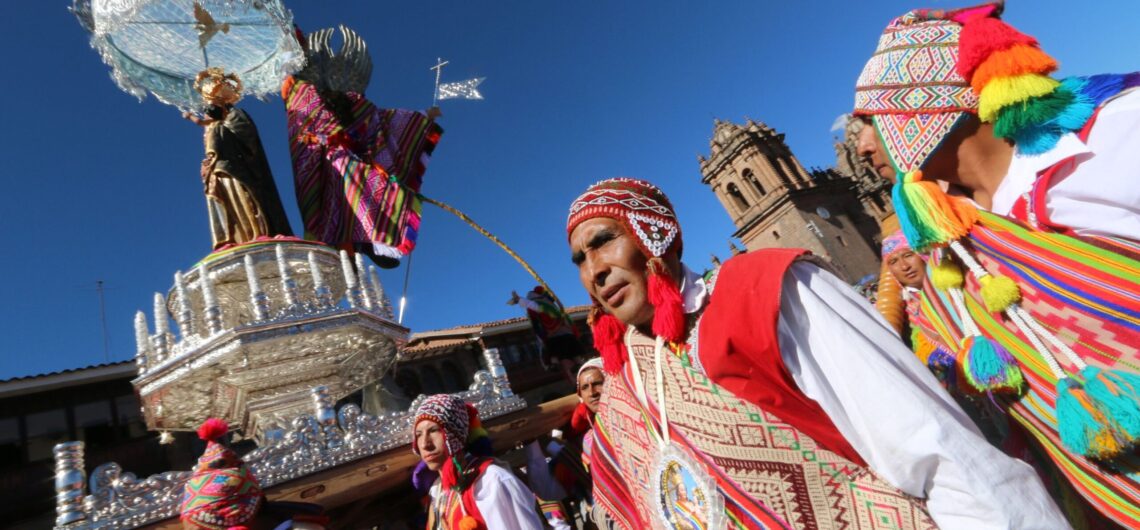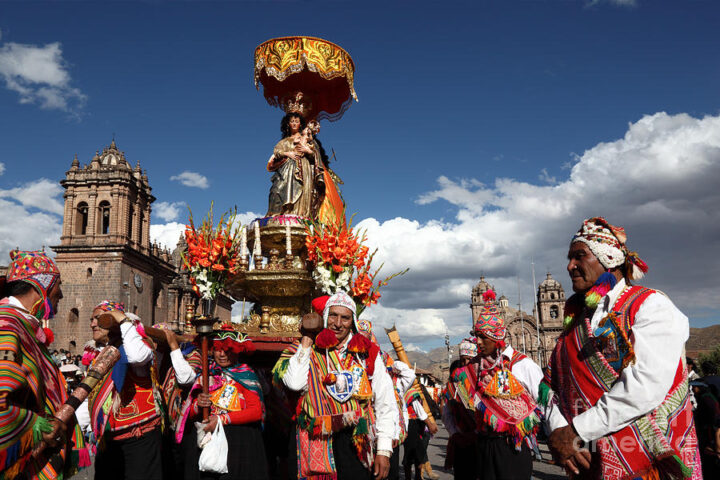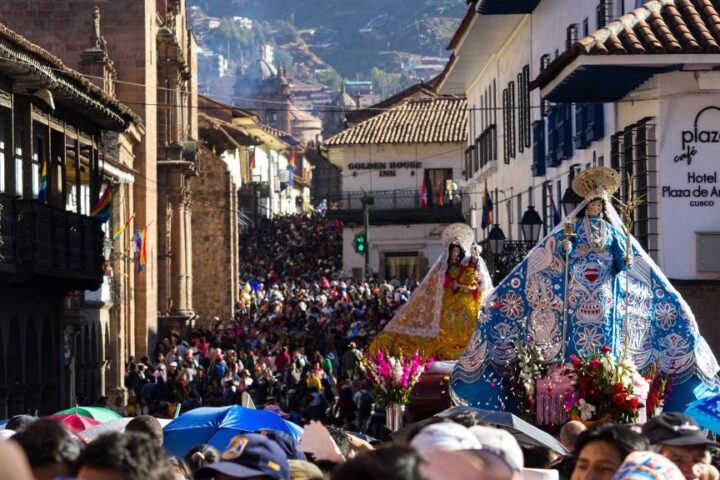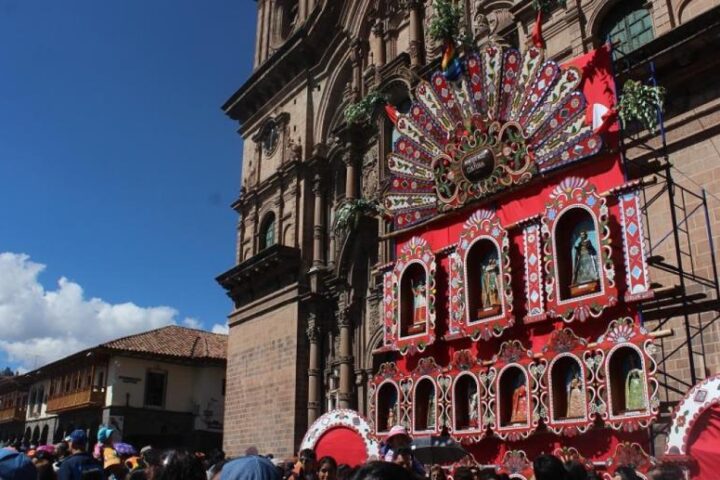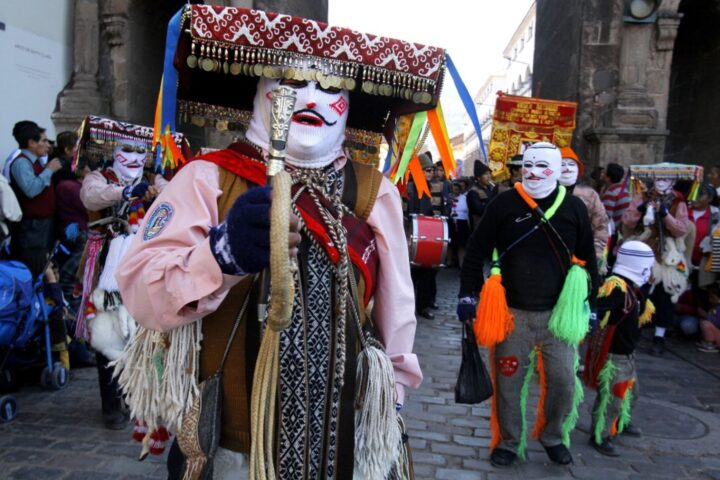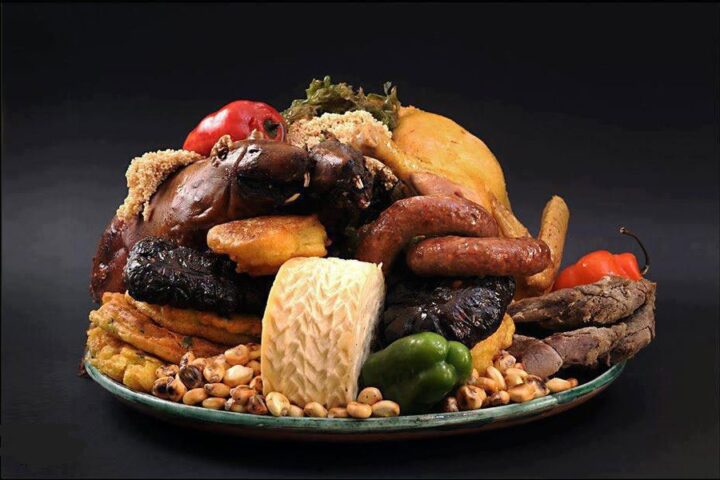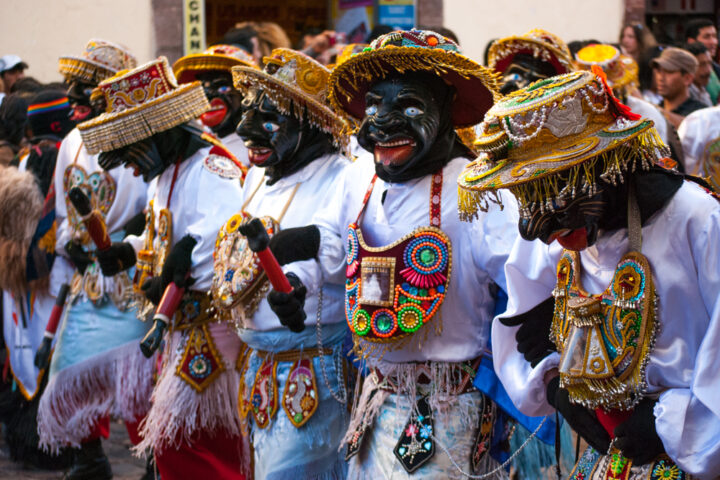Every year, Cusco celebrates the movable (in 2019 it is on June 20) Catholic holiday of Corpus Christi, in a grand way. The Feast of Corpus Christi (Latin for “Body of Christ”) is a Catholic liturgical solemnity celebrating the real presence of the body and blood of Jesus Christ, in the elements of the Eucharist. This feast is celebrated by Catholics around the world and in other parts of Peru with processions that involve the Monstrance* only, but in Cusco it involves this and much more. It is certainly a step above the rest with images of bejewelled and bedecked Saints and Madonnas from different Cusco parishes coming out in procession. The city pulls out all the stops with a seven-day event full of prayer, color, music and great food.
The Corpus Christi Festivity In Cusco
The Corpus Christi festivity Cusco celebrates has been a tradition for more than 450 years, and is known as the longest-running religious festivity in the Americas.
The festivity is famous for its processions of 15 statues of saints and madonnas across the city to Cusco’s cathedral. Each statue represents a different parish church, and cusquenos follow the procession through the city with flowers and offerings. You’ll notice that each image has been thoughtfully decorated, with close attention to detail and adornment. Each statue is carried on a throne. Those who carry them, known as cofradias, spend a whole year leading up to the event preparing for the procession.
Cusco’s Corpus Christi festivity has roots in the Andean Baroque era of the 17th and 18th centuries. Religious art and architecture from this period is characterized by its dramatic, intricate design – and that definitely shows in the beauty of each statue and the amount of care given to each step of the festivity.
The whole city is invited to partake in the Corpus Christi festivities. Plaza Mayor is not closed off to passersby like it often is at other major events, so you’re welcome to walk right on up to the festivities – that is, if you can find a space to stand among all the crowds!
This Celebration is an important example of the syncretic relationship between Catholic and indigenous religious traditions that is prevalent in certain regions of Peru. This can be traced back to the 1500s, when many Inca were introduced to Catholicism by the Spanish and incorporated many of their existing traditions into the church’s practices.
Join In On The Celebrations
After the opening procession, the statues will remain at the Cathedral for seven days. This is a great time to marvel at them up close. After the week is over, another procession will take the saints back to the churches they arrived from.
In the meantime, Cusco celebrates as much as possible. The week is full of energizing music and folk dance, as well as special food to mark the occasion. You’ll see traditional dancers dressed to the hilt and spectators dressed up as well.
During the festivity, you’ll want to be sure to try Chiriuchu, a special Corpus Christi dish that locals love. Served cold, the delicious dish combines all kinds of tasty components, like tortillas, toasted corn, guinea pig, jerky, chicken, sausage, and seaweed.
To make the most of the festivity, arrive early to find good viewing spaces or make a reservation at a local restaurant with a balcony so you can watch things unfold on the street below. The best way to experience the celebration is with an expert guide (which Aracari can arrange) who can explain each step of the procession and festivity to you. It can be tough to understand the full context of what you’re watching without the help of a pro. (Of course, another perk of an experienced guide is that they know the very best viewing spots to see the action up close.) Corpus Christi is a delightful array of colors and songs, and seeing it in person is a total treat
*(in the Roman Catholic Church) an open or transparent receptacle in which the consecrated Host is displayed for veneration.
Contact us today to create your very own tailormade itinerary to Peru, or explore one of our many itineraries for inspiration!. Also check out our information on Peru festivals.

